
By clicking on the product links in this article, we may receive a commission fee at no cost to you, the reader. Read full affiliate disclosure here.
A pair of the best hiking shoes should certainly be on your list of must-haves if you're new to hiking. Regular old shoes might cut it for casual boardwalk strolls, but they'll leave you wanting on a steep hiking trail, and are an especially important piece of camping gear
Depending on the type of hiking you do, you might need something that's lightweight, waterproof, heavily insulated, or just budget-friendly. What you need to look for in a hiking shoe is going to change based on many factors.
Getting outside? Then GEAR UP for less with 50% off hiking gear from Columbia.
The features you'd need in a winter hiking boot, for example, are going to cause problems when hiking in the summer. Trust me, you don't want to make this mistake and find out what the early stages of trench foot feel like.
Luckily, you've come to the right place to find everything you need to know about buying the best hiking shoes for you. This ACTIVE Reviews Team guide covers what to look for, common questions that new hikers ask, and nine hiking shoe options for you to choose from. So let's hit this (digital) trail!
Why Trust Us?
ACTIVE.com's editorial team relies on the knowledge and experience of fitness and wellness experts including competitive athletes, coaches, physical therapists, nutritionists, and certified trainers. This helps us ensure that the products we feature are of the highest standard. Collectively, the team has spent countless hours researching equipment, gear, and recovery tools to create the most accurate, authentic content for our readers. Customer satisfaction is a key part of our review process, which is why we only feature products that are highly rated. More importantly, each member of our team is a fitness enthusiast. Fitness may be our job, but it is also our passion. Therefore, we strive to bring you products that we trust and would personally use.
The Best Hiking Shoes - Our Top Picks
- Best Overall: Merrell Moab 3 Hiking Shoe
- Best Lightweight Hiking Shoes: Arc'teryx Aerios FL GTX Hiking Shoe
- Best Hiking Shoes for Men: adidas Men's Terrex AX4 Primegreen Hiking Shoes
- Best Hiking Shoes for Women: adidas Women's Terrex AX4 Primegreen Hiking Shoes
- Best Waterproof Hiking Shoes: Columbia Trailstorm Mid Waterproof Hiking Shoe
- Best Hiking Shoes for Beginners: Skechers Relaxed Fit Trego Lookout Point Hiking Shoes
- Best Hiking Shoes for Flat Feet: Salomon XA Pro 3D v8 Gore-Tex Hiking Shoes
- Best Hiking Shoes for Plantar Fasciitis: Salomon Ultra Leather Gore-Tex Hiking Shoe
- Best Budget Hiking Shoes: Reebok Trail Cruiser Hiking Shoe
What should you look for in a hiking shoe?
The best way to make your choice is to examine all of these factors and then prioritize them according to your preference. A waterproof shoe might be more important to you than a lightweight shoe if you're always hiking in the Pacific Northwest, for example.
Use these factors to compare and contrast the best hiking shoes out there today.
Weight
Weight is a factor that gets hotly debated in hiking groups. You've got those who argue over the best shoes for thru-hiking based on differences of half an ounce. Then you have others who lug around heavy boots on hikes of any distance because they want the added ankle protection and weatherproofing.
Ultimately, it's tough to tell the difference between a shoe that weighs 15 ounces and a competitor that weighs 17 ounces. But there's a big difference between a 15-ounce hiking shoe and a 30-ounce design.
If you're planning to spend six months hiking the Pacific Crest Trail, you'll feel that difference when the stress of the extra weight accumulates over several thousand miles.
To determine whether a hiking shoe is too heavy for your liking, your best bet is to pop into your nearest hiking store and try them on. You can always come back online to find a better deal than what you'd find in the store, but knowing how shoes really feel on your feet is a critical part of this process.
Waterproofing
The design of a hiking shoe's outer membrane largely dictates how waterproof it is. Traditionally, the trouble with getting an incredibly waterproof hiking shoe is that you had to sacrifice breathability.
That was back in the days of hiking shoes with waxed leather uppers to keep the moisture out. Unfortunately, a side effect is that they also trapped moisture inside. Today, we have new options like GORE-TEX and eVent membranes that provide waterproofing along with a degree of breathability.
The reality is that there's always a chance that your feet will get wet on a hike. Especially if you plan to do any fishing or other activities along the water. That's why it's never a bad idea to bring an extra pair of hiking socks in your pack. But for your hiking shoe choice, it's important to strike a balance between waterproofing and breathability.
If you're a fair-weather hiker who only explores the trails during the summer, go for a breathable shoe over a waterproof design. But if you're a die-hard who hikes year-round and continues as planned regardless of the weather, you might want a waterproof hiking shoe.
Material
The most common materials used in hiking shoes are synthetics, leather, and mesh. Most modern hiking shoes utilize a combination of these materials to provide strategic benefits in certain areas of the shoe.
For instance, a mesh tongue provides excellent ventilation so your feet aren't sitting in a puddle of sweat after an hour on the trail. Synthetics are extremely popular for the upper portion of the shoe because they are lightweight and dry rapidly.
Leather still has its benefits in terms of durability, but you'll be hard pressed to find an all-leather hiking shoe out there these days. Instead, you're more likely to find synthetic leather mixed with other materials.
Because most modern hiking shoes are a combination of these materials, you'll essentially be choosing between mutts. Erring on the side of the shoe with more mesh will give you a lighter model that dries quickly, but may not be as durable. Erring more toward synthetics and leather will provide more durability and weather protection, even if they're a bit heavier.
Best Use
The two main uses for hiking shoes are day hikes and multi-day backpacking trips. Long-distance hiking generally requires a lighter shoe to minimize the amount of effort required with each step.
A lightweight hiking shoe is also great for day hikes, but if you're willing to carry around a little more weight, you can go for a shoe that's more waterproof and more durable. That will afford you the chance to explore responsibly off-trail or tromp through that creek without worrying about whether your shoes will dry before you have to put them on again the next morning.
Price
Now we get down to brass tacks: How much are you willing to spend? On average, you can spend anywhere from $40 up to more than $400 for a pair of high-quality hiking shoes. To find a healthy middle ground, expect to pay between $100 and $200.
The fact of the matter is that you can spend less, but you'll probably need to replace your hiking shoes sooner. If you're able and willing to stretch your budget some, you're more likely to get a durable hiking shoe that's built to last.
Best Overall - Merrell Moab 3 Hiking Shoe
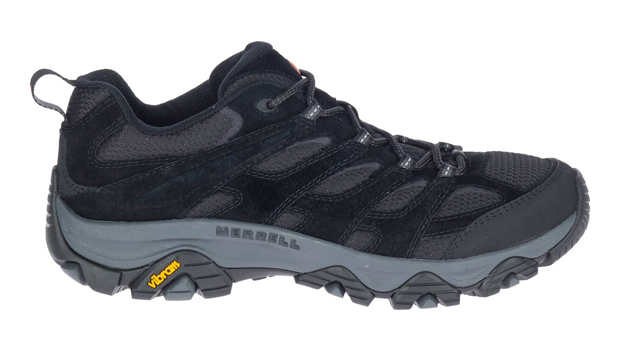
SPECS
- Upper material: Pig suede leather and breathable mesh upper, Vibram TC5 rubber outsole
- Weight: 32.45 oz.
- Closure type: Lace (100% recycled)
- Cushioning: Kinetic Fit ADVANCED contoured foot bed with reinforced heel cushioning
- Lug: 5 mm
- Available width: Standard
Suited for everything from a quick trail exploration after work to a full weekend of backpacking, the Merrell Moab 3 gets our nod for the best overall hiking shoe because of its combination of durability and breathability, as well as its eco-friendly use of recycled materials.
The laces and webbing are 100 percent recycled to reduce the environmental impact of manufacturing this hiking shoe. In terms of performance, the deep lugs and Vibram outsole provide excellent grip on uneven or slippery terrain.
Nylon shanks and a protective rubber toe cap work to keep your ankles stable while protecting your feet from rolling rocks or stubbed toes. The leather-mesh material used in the shoes' upper also provides protection while allowing just the right amount of moisture to escape.
The predecessors of the Merrell 3 have helped more than 25 million people explore the outdoors to date. The redesign of this classic hiking shoe features enhanced insole support, more midsole cushioning, and an upgraded outsole.
PROS
- Deep lugs for extra traction
- Patented insole contours to your foot's shape
- Cushioned heels provide extra support on long hikes
CONS
- Slightly heavier than some competitors
- Only available in standard width
BUY: Merrell Moab 3 Hiking Shoe
Best Lightweight Hiking Shoes - Arc'teryx Aerios FL GTX Hiking Shoe
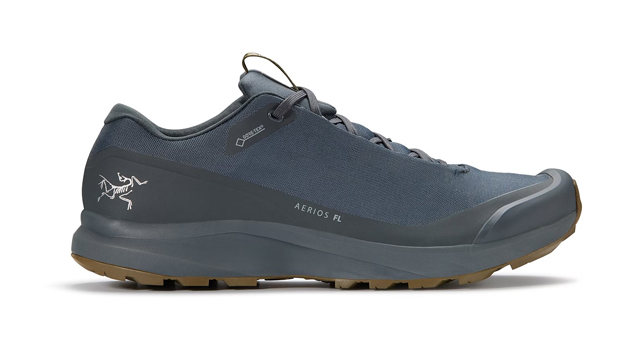
SPECS
- Material: GORE-TEX membrane, Cordura mesh, and TPU high-abrasion protection films
- Weight: 12 oz.
- Closure type: Lace
- Cushioning: Compressed EVA midsole with 4mm Ortholite insert
- Heel-to-toe drop: 9-12mm
- Available width: Standard
The lightweight nature of these hiking shoes makes them an excellent choice for technical hiking and long-distance trekking. It's a minimalist shoe designed to help you travel light and fast, while still providing waterproof and windproof qualities.
The design for this lightweight hiking shoe was actually inspired by trail runners. That's why it features an integrated thermo polyurethane shank and a compressed midsole to provide protection and comfort without adding too much weight.
The shoe's medium height provides more ankle support than traditional low-cut trail runners and the Vibram MegaGrip outsole offers excellent traction and grip on wet and uneven surfaces.
PROS
- Molded insert cushions and contours to your foot's shape
- GORE-TEX membrane provides waterproofing without sacrificing breathability
- Agile and stable for moving fast on the trail
CONS
- It's one of the more expensive shoes on our list
- The standard fit is a little narrow
BUY: Arc'teryx Aerios FL GTX Hiking Shoe
Best Hiking Shoes for Men - adidas Men's Terrex AX4 Primegreen Hiking Shoes
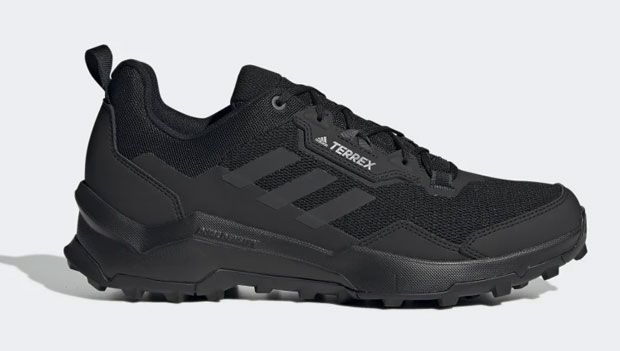
SPECS
- Material: Mesh and synthetic upper, Continental rubber outsole
- Weight: 1 lb. 10.2 oz..
- Closure type: Lace
- Cushioning: Dual-density EVA midsole
- Available width: Standard
Built to handle rugged terrain, resist tears and abrasions, and keep your feet cool on hot summer hikes, the adidas Terrex AX4 Primegreen is a great entry-level hiking shoe if you're looking for quality with a reasonable price tag.
The upper portion of the shoe allows moisture to escape to keep your feet from overheating and the synthetic overlays provide extra abrasion resistance so these shoes won't tear the first time you accidentally make contact with a rock or tree root.
The rubber outsole provides good grip on a variety of surfaces and the foam midsole provides lightweight cushioning to absorb impacts. The upper is even manufactured with 50 percent recycled materials, so adidas is doing its part to minimize its environmental impact.
PROS
- That sweet blend of durability and breathability
- Eco-friendly manufacturing
- Enough lightweight cushioning for all-day adventures
CONS
- You'll find shoes with better tread and grip
- Some issues with width and sizing
BUY: adidas Men's Terrex AX4 Primegreen Hiking Shoes
Best Hiking Shoes for Women - adidas Women's Terrex AX4 Primegreen Hiking Shoes
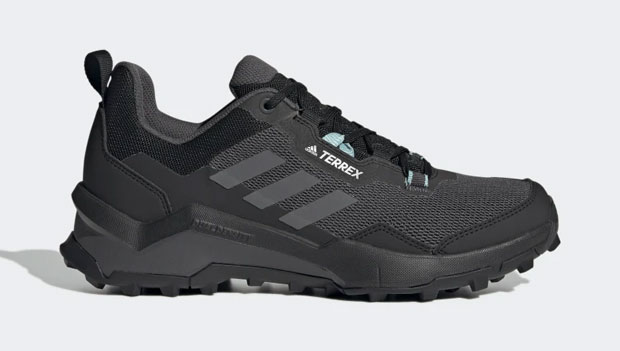
SPECS
- Material: Mesh and synthetic upper, Continental rubber outsole
- Weight (pair): 11.1 oz.
- Closure type: Lace
- Cushioning: EVA midsole
- Available width: Standard
Similar to the men's version, the women's adidas Terrex AX4 Primegreen is also an excellent hiking shoe for new and casual adventurers. The shoe is budget-friendly while still providing the kind of durability and breathability you'd need on full-day hikes. Additionally, these hiking shoes are lightweight and provide great gripping and cushioning as you move through various terrain.
PROS
- Nice blend of breathable mesh and abrasion-resistant synthetics
- A budget-friendly shoe that's designed to last
- Partially made with recycled materials
CONS
- Not the best in terms of traction
- Can run small
BUY: adidas Women's Terrex AX4 Primegreen Hiking Shoes
Best Waterproof Hiking Shoes - Columbia Trailstorm Mid Waterproof Hiking Shoe
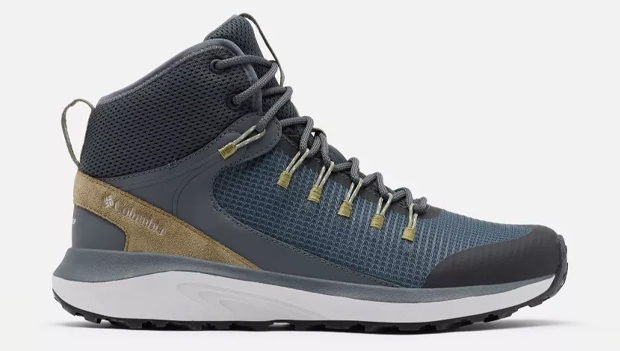
SPECS
- Material: Mesh/suede heel overlay, Adapt Trax outsole
- Weight: 12.25 oz.
- Closure type: Ghillie lacing
- Cushioning: Techlite Foam
- Lug: 4mm
- Available width: Standard
The Columbia Trailstorm is an excellent waterproof hiking shoe that also provides more ankle support than most. It's a high-top design with a seam-sealed membrane that keeps moisture out while still allowing your feet to breathe on hot hiking days.
The shoe's Ghillie lacing system allows you to snug them up to your preference and maintain that security throughout your day. A lightweight toe cap provides extra protection against stubbing your toe on roots or rocks without adding a ton of weight.
In fact, this shoe is only a smidge heavier than our choice for the best lightweight hiking shoe. Plus, it offers the additional stability of 4-millimeter outsole lugs that are oriented toward the front and rear of the shoe to provide more grip on uneven terrain.
PROS
- Offers natural mid-foot lockdown to reduce rubbing and blisters
- Better traction on multi-directional trails
- Comfortable and stable foam-cushioned insert
CONS
- User concerns surrounding durability
- Only available in a standard width
BUY: Columbia Trailstorm Mid Waterproof Hiking Shoe
Best Hiking Shoes for Beginners - Skechers Relaxed Fit Trego Lookout Point Hiking Shoes
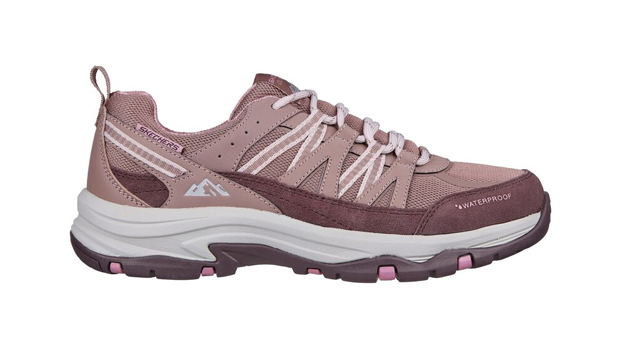
SPECS
- Material: Suede and mesh upper, rubber traction outsole
- Weight: 13 oz.
- Closure type: Lace
- Cushioning: Air cooled memory foam
- Heel height: 1.25"
- Available width: Medium
You may not associate the Skechers brand with hiking, but they actually make a nice pair of hiking shoes for beginners. The Lookout Point shoe is light and water-resistant and it won't break the bank like high-end hiking shoes.
The thick heel on this hiking shoe provides extra cushioning and the rubber outsole provides reasonable grip and traction on uneven terrain. It also boasts a roomier toe box than most, making it ideal for folks with slightly wider feet.
The shoe's suede mesh upper provides reasonable waterproofing and the memory foam insert offers plenty of cushion for your feet. Because that insert is air-cooled, it promotes breathability by allowing sweat and moisture to escape.
PROS
- Roomier fit for wider feet
- Reasonable price for beginner's hiking shoes
- Elevated heel provides extra cushion
CONS
- Smaller lug depth may not offer the best traction
- Limited color options
BUY: Skechers Relaxed Fit Trego Lookout Point Hiking Shoes
Best Hiking Shoes for Flat Feet - Salomon XA Pro 3D V8 Gore-Tex Hiking Shoes
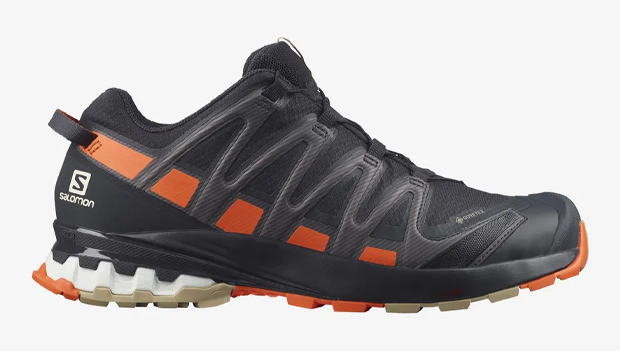
SPECS
- Material: Textile, rubber, textile MCL, and synthetic
- Weight: 13.05 oz.
- Closure type: Quicklace
- Cushioning: Ortholite insole
- Heel-to-toe drop: 11mm
- Lug: 3.5 mm
- Available width: Standard
Built for mixed and rocky terrain, the Salomon XA Pro offers extra stability for hikers with flat feet. You'll get a standard level of cushion, but an enhanced degree of protection from the elements compared to other hiking shoes.
The shoe boasts a waterproof GORE-TEX membrane and premium grip that offers excellent traction, even on wet trails. The latest update to this hiking shoe features a 3D chassis that offers a more secure fit by striking a better balance between stability and comfort.
It's also roughly 20 grams lighter than the previous version and boasts high-performance EVA foam padding to dissipate impacts with each step. The upper on the XA Pro is built with stitch-free construction so you can enjoy a glove-like fit and super comfortable feel.
This hiking shoe is durable enough to be used 2-3 times per week and the 3.5-millimeter lugs offer excellent traction and grip. It even features a dedicated lace pocket to secure the Quicklace system once you've tightened your shoes to your desired fit.
PROS
- Easy to secure quickly and adjust throughout your day
- Never worry about laces coming untied
- Open mesh upper promotes breathability
CONS
- Only available in a standard width
- Definitely on the more expensive side
BUY: Salomon XA Pro 3D V8 Gore-Tex Hiking Shoes
Best Hiking Shoes for Plantar Fasciitis - Salomon Ultra Leather Gore-Tex Hiking Shoe
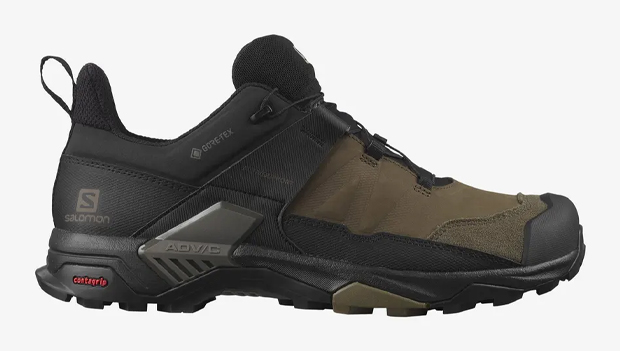
SPECS
- Material: Textile, rubber, synthetic leather, and synthetic MCL
- Weight: 14.11 oz.
- Closure type: Quicklace
- Cushioning: Ortholite insole
- Heel-to-toe drop: 11mm
- Available width: Standard
For those hikers out there who deal with plantar fasciitis, these Salomon hiking shoes provide mobile support wings that hold your feet in place while also adapting to their unique shape and volume.
The SensiFit midsole cradles your foot and combines with the Quicklace system to provide a secure and snug fit. Also, it boasts an Ortholite insole that offers additional cushioning to minimize stress on your feet over hundreds of miles.
Made for mixed trails and technical terrain, these hiking shoes are ideal for intermediate and advanced hikers. They provide a refined look if style is a concern and a maximum degree of protection to keep your feet healthy when navigating unforgiving terrain.
It's also designed with lugs that are in a Chevron shape, which offer a multi-directional grip to improve your traction on loose dirt and soft mud. You'll also enjoy the mudguard made to protect the lateral and medial sides of your feet.
PROS
- Shoe chassis provides stability without limiting mobility
- Outer membrane offers excellent water resistance
- Outsole gives you extra grip and control on steep descents
CONS
- They require a larger financial investment
- Only available in a standard width
BUY: Salomon Ultra Leather Gore-Tex Hiking Shoe
Best Budget Hiking Shoes - Reebok Trail Cruiser Hiking Shoe
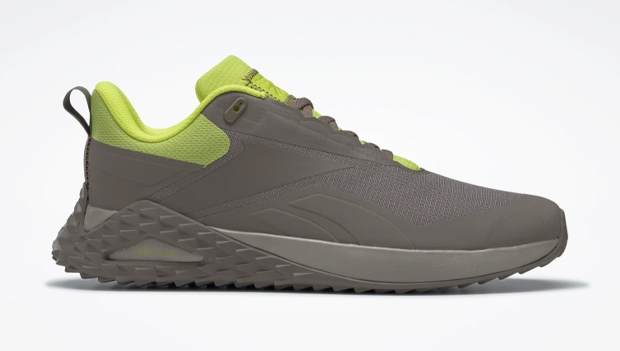
SPECS
- Material: Ripstop upper, textured rubber outsole
- Weight: 8.8-10.5 oz.
- Closure type: Lace
- Cushioning: Fuel foam midsole
- Available width: Standard
If you're looking for a quality pair of hiking shoes but you're not ready to spend a lot of money, the Trail Cruiser shoes from Reebok are a reasonable option. They are essentially upgraded walking shoes that can handle easy to moderate hiking trails.
The cool part about these shoes is that they're just as comfortable for walking in the city as they are for exploring trails. The ripstop upper makes them durable and their rubber outsole provides decent grip on most trails.
Reebok's patented FuelFoam used in the midsole provides a nice balance of cushioning and responsiveness. They can handle a wide range of outdoor activities, but they'll work well for casual hiking on well-maintained trails.
PROS
- An affordable choice for new hikers
- Lightweight design minimizes stress on your feet
- Upper section offers abrasion resistance
CONS
- Shallow lugs won't offer the best grip on technical terrain
- Might not be the most durable option
BUY: Reebok Trail Cruiser Hiking Shoe
FAQs About Hiking Shoes
Can you go hiking in sneakers?
The short answer is yes, but there's a risk. Go into any shoe store and grab two display shoes—one regular sneaker and one hiking shoe. Turn them over and examine the tread on the bottom. You're likely to find significantly deeper lugs on the hiking shoe than on the sneaker.
This means you're going to get much better traction with hiking shoes. When you're talking about walking on uneven terrain that can often be muddy, rocky, or otherwise much different from what you normally walk on, using sneakers comes with the added risk of slips and falls that can lead to injury.
Are hiking shoes the same as hiking boots?
In some aspects, yes. Both provide better grip and traction on hiking surfaces than regular sneakers. However, hiking boots tend to offer more ankle coverage and are often built to provide more protection from moisture. The downside of this added protection is usually added weight.
Hiking shoes, on the other hand, are often designed to be lightweight and highly breathable. They won't offer the same protection from the elements as many hiking boots, but they are best suited for long-distance hikes when wearing heavy boots can be a hindrance.
What is the difference between a hiking shoe and a walking shoe?
The main difference between a hiking shoe and a walking shoe is the degree of protection. Hiking shoes are meant for rough terrain where the possibility of impacting rocks, tree roots, and other obstacles is quite common.
On the other hand, walking shoes are primarily designed for man-made surfaces like sidewalks or manicured walking trails. Because they're designed for harsher terrain, hiking shoes generally offer thicker soles and uppers, as well as more padding than regular walking shoes.
Get ACTIVE on the Go


Couch to 5K®
The best way to get new runners off the couch and across the finish line of their first 5K.
Available for iOS | Android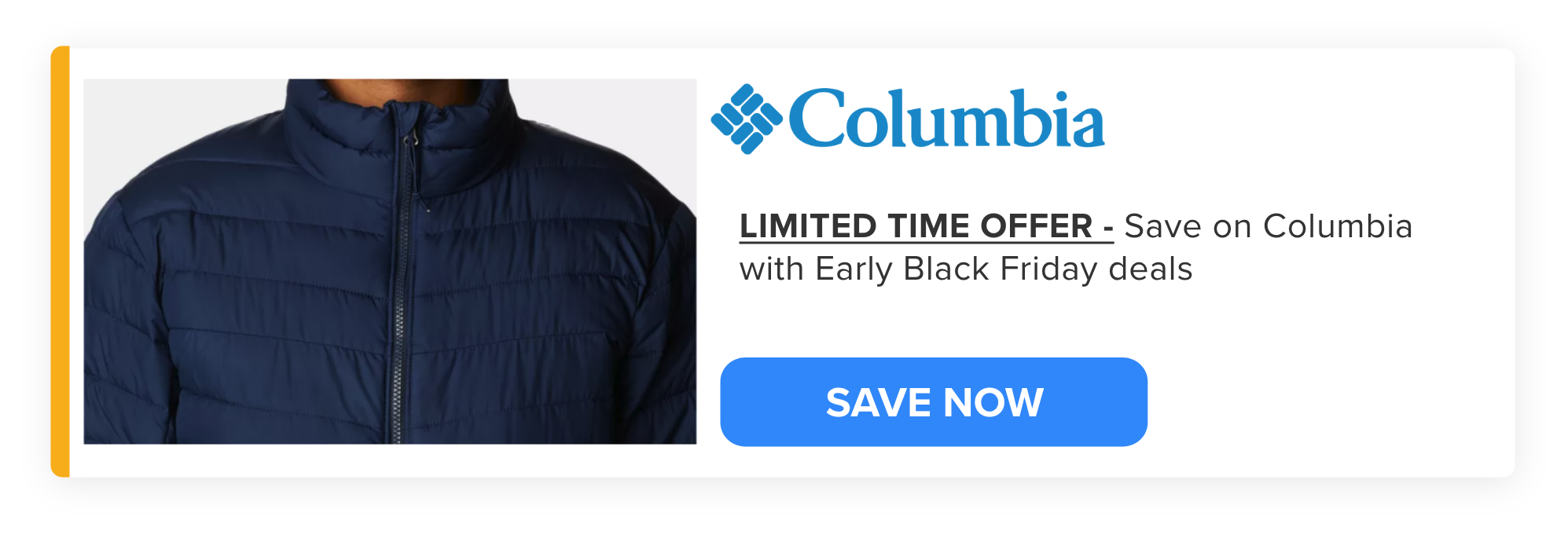




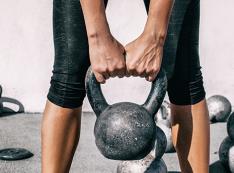



Discuss This Article